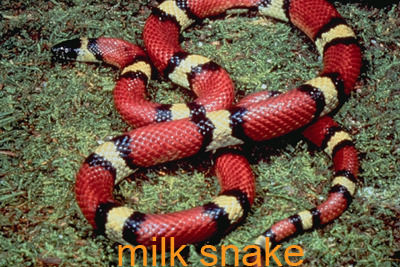Snakes
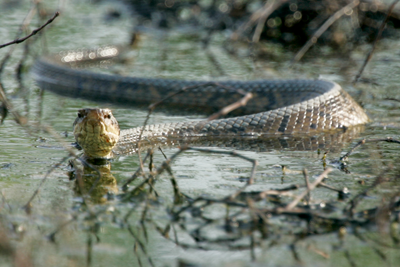
Snakes serve a valuable function in the environment. Please do not kill a snake - even a venomous one. Snakes do not prey on humans and they will not chase you, in fact they usually retreat or escape if given the opportunity. The danger comes when they are either surprised or cornered. The majority of bites result from people taking unnecessary or foolish risks with venomous snakes. Freeze when snakes are known to be nearby until you know where they are. Allow the snake to retreat. If you must move, back slowly and carefully away from the snake.
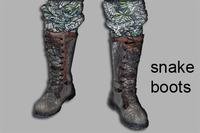
Do not play around with a dead snake, they have been known to bite and inject venom because of muscle contractions. Snakes like tall grass. Be careful when stepping over fallen logs and rock outcroppings and take care along creek banks and underbrush. Animal burrows make excellent habitat for snakes-don't reach in without first checking. Read more information on snakes.
Heavy footwear, snake proof trousers, leggings or boots will help reduce your risk.
Snakes bites
For snake bites, it is best to read up on Venomous Snakes - Symptoms and First Aid at the Center for Disease Control and Prevention web site (National Institute for Occupational Safety & Health)
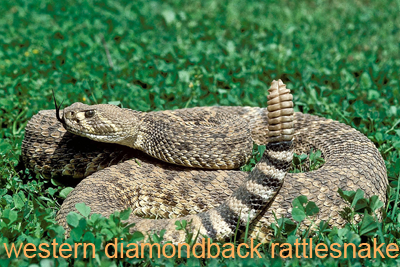
Rattlesnakes
There are 10 species of rattlesnakes in Texas. The Western diamondback (Crotalus atrox), has brown, diamond-shaped markings along the middle of the back and alternating black and white rings on the tail. Averages 3 1/2 to 4-1/2 feet in length, and can reach seven feet. This is the most common and widespread venomous snake in Texas, found in all but the easternmost part of the state.
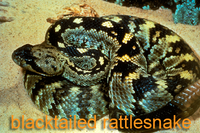
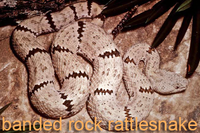
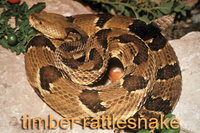
Timber rattlesnake (Crotalus horridus) also known as Canebreak rattlesnake is a large, heavy-bodied snake averaging 4-1/2 feet. Brown or tan with wide, dark crossbands. Tail is entirely black. Found in the eastern third of the state in wooded areas in wet bottomlands.
Mottled Rock rattlesnake (Crotalus lepidus) is light cream or pink background with widely spaced, dark crossbands and mottled areas between the crossbands. Small and slender with an average length of about two feet. Found in the mountainous areas of West Texas.
Banded Rock rattlesnake (C.l. klauberi) Similar to the mottled rock rattlesnake, but darker greenish-gray in color. Found only in the extreme western tip of Texas.
Blacktail rattlesnake (Crotalus molossus) is gray to olive green with dark blotches along the back and a black tail. Averaging a length of 3-1/2 feet, it is found from Central Texas throughout most of West Texas in bushes and on rocky ledges.
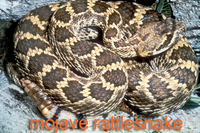
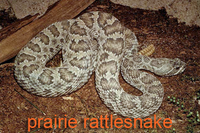
Mojave rattlesnake (Crotalus scutulatus) is similar to the western diamondback in markings, but smaller and more slender and found only in extreme West Texas.
Prairie rattlesnake (Crotalus viridis viridis) is a slender rattler that is greenish or grayish, with rounded blotches down the middle of its back. Average length is about three feet and is found in the grassy plains of the western third of the state.
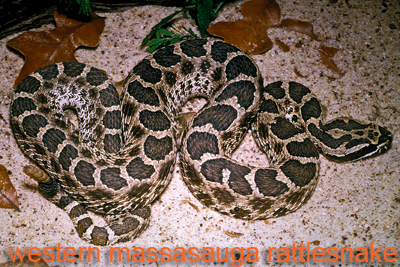
Western massasauga (Sistrurus catenatus tergeminus), light gray, with brown oval blotches along the middle of the back and smaller blotches along each side. They are two feet in length and found through the middle of the state in grasslands, marshy and swampy areas.
Desert massasauga (S.c. edwardsii), lighter in color than the western massasauga, smaller and more slender. Found in the Trans-Pecos, western Panhandle and the lower Rio Grande Valley.
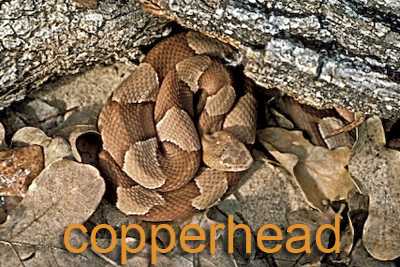
Copperheads
There are three subspecies of Copperheads in Texas; Southern copperhead (A.c. contortrix), 20-30 inches long and found in the eastern one-third of the state; Broadbanded copperhead (A.c. laticinctus), about two feet long, widely scattered in central and western Texas; and the Trans-Pecos copperhead (A.c. pictigaster), 20-30 inches in length and found near springs in the southern part of the Trans-Pecos. The bite of a copperhead is seldom fatal because of its short fangs (1.2 to 7.2 mm in length) and small amount of venom.
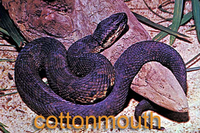
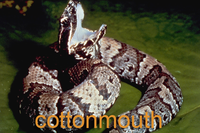
Cottonmouths
Also known as 'water moccasins', only one recognized subspecies is found in Texas; Western cottonmouth (A.p. leucostoma). They are world's only semi-aquatic viper. Cottonmouths can be dark brown, olive-brown, olive green or almost solid black. They are marked with wide, dark bands, which are more distinct in some individuals than in others. Juvenile snakes are more brilliantly marked. The cottonmouth gets its name from the white tissue inside its mouth, which it displays when threatened. This heavy-bodied snake, which averages about 3-1/2 feet in length, is found over the eastern half of the state in swamps and sluggish waterways, coastal marshes, rivers, ponds and streams.
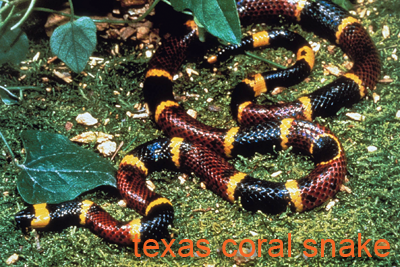 \
\
Coral Snake
Coral snakes, which are venomous, do not have cat’s-eye pupils. They are the only venomous snake in Texas that is brightly colored red, yellow, and black bands completely encircling the body. Because harmless Texas scarlet snakes and Louisiana and Mexican milk snakes share the red, black, yellow coloration pattern, it is important to notice the order of the colored bands. A good memory-jogging device to learn is "Red next to black-friend of Jack; red next to yellow will kill a fellow." Finally, with scarlet and milk snakes, the bands do not completely encircle the body but stop at ground level, under-bellies being uniform in color. Texas coral snakes are extremely shy and non-aggressive. Although their mouths are smaller than most venomous snakes, they can still inflict a serious bite if handled. Coral snakes eat mostly other snakes and small reptiles and are members of the same family of snakes as the cobras of India.
